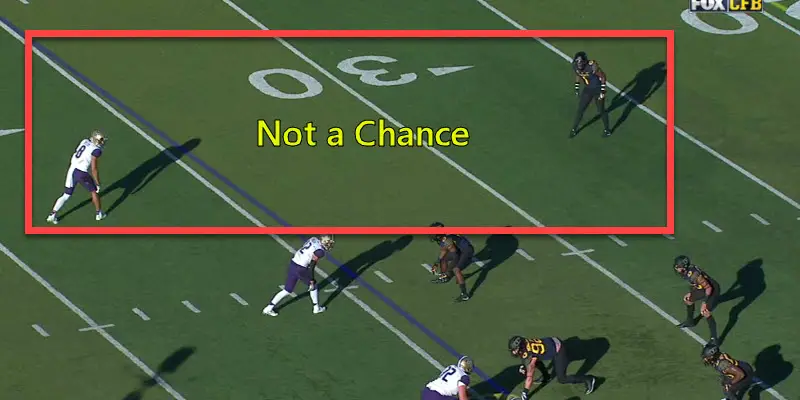For years the Ducks have been a “bend but don’t break” defense. The problem is, in 2016, they finally broke. In this article, I will be focusing on the pass defense and the immediate changes Oregon fans will likely (and hopefully) see this season.
The first thing that must be eliminated is the No Man’s Land technique. This is where the defender plays so far off of the receiver, allowing him to run whatever route he wants without being disrupted at any point. In other words, this technique takes nothing away from the offense.
Jim Leavitt is coming over from Colorado to run the Duck defense, where the Buffs ranked fourth in the country in completion percentage at 49.8 percent. Comparatively, Oregon ranked fifth worst, coming in at 64.8 percent on the year. Examining the film, it is very easy to see why there is such a stark difference: it’s the alignment at the snap. Oregon allowed a tremendous amount of space, while Colorado did not. The good news is that a little bit of improvement will translate to more wins. With Coach Leavitt’s resume, I think fans can expect improvements, but what does that mean, and what does it look like?
Great pass defense has two factors: pass rush and coverage. The two go hand and hand.
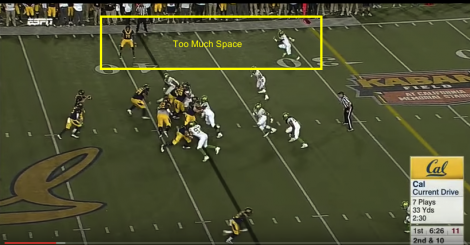
Easy Throw and Catch Photo From Video
When you hear the announcers say that was a “coverage sack” it is because the Quarterback had time to throw, but nobody was open — eventually the pass rushers were able to generate pressure. A good pass rush does not even allow time for coverage; they get to the QB quickly. Colorado had 36 sacks last year, a solid number, but not the reason for its excellent pass defense. Instead, Colorado used excellent press coverage technique in the secondary.
A little background; press coverage is a man-to-man coverage that means the defender starts on the line of scrimmage, usually with 1-2 yards off the man he is covering. The basic concept of press coverage is to limit space for the receiver during the whole route. The defender’s job is to be in the receiver’s hip pocket from the release off the line through the ball arriving. The easiest way to think about playing good press coverage is good one-on-one basketball defense. The defender should:
1. Stay square to the receiver
2. Eyes should be on the receiver’s waist
3. Move their feet side-to-side, and then turn into the receiver and run.
The best press coverage corners are patient and mirror the wide receivers as they start their route. If the receiver wants to go right, a good defender will shuffle left while staying square. The technique starts and ends with good eye discipline and good feet. A common mistake in trying to be too aggressive is being overly grabby with hands, but if the defender lunges forward and misses; the receiver has an easy release to get downfield. The defender must think he is a toll booth and he cannot let the receiver go where they want without collecting a toll.
The corner can accomplish this either by having the wideout go around them (taking a different road), or by pushing the receiver off his desired path if he attempts to take the space himself (paying the toll). Either way, the receiver cannot travel without giving something up. This disrupts the timing the receiver has with the quarterback, which in turn disrupts the offensive passing game.
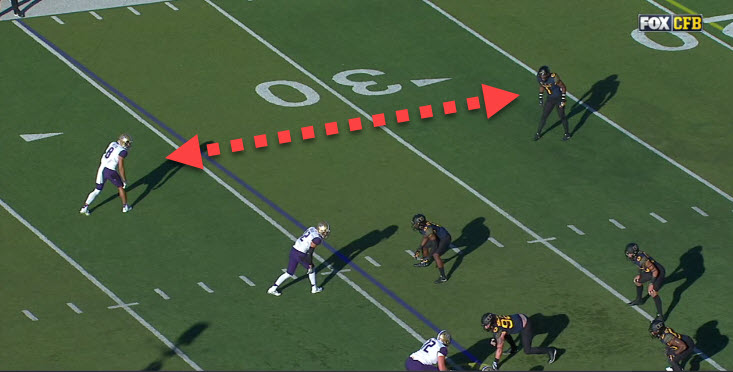
Everything is open for the receiver.
Photo from Video
Above is an example of off man coverage and its disadvantages for Oregon. Notice the defender is 10 yards off the receiver, and he is allowed to run wherever he wants, without any toll paid.
As a result of all the space, (above) the receiver runs an aggressive double move and the Duck defender falls down. Washington completes a wide-open 34-yard pass.
Below is Oregon’s 2016 version of press coverage against John Ross, arguably the best WR in the nation. It may be a tough cover, but that’s simple life in the Pac-12.
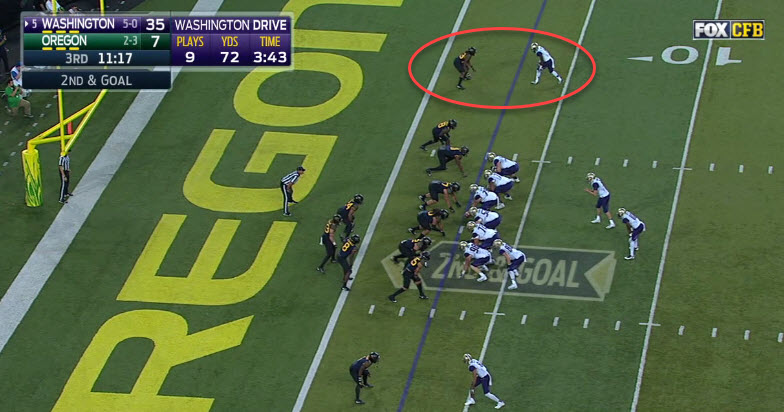
Everything is available for Ross with a defensive back lined up in No Mans Land.
Photo from Video
We start (above) with a defensive back lining up–too far for true press coverage, and thus leaving all route options open for one of the best receivers in the nation.
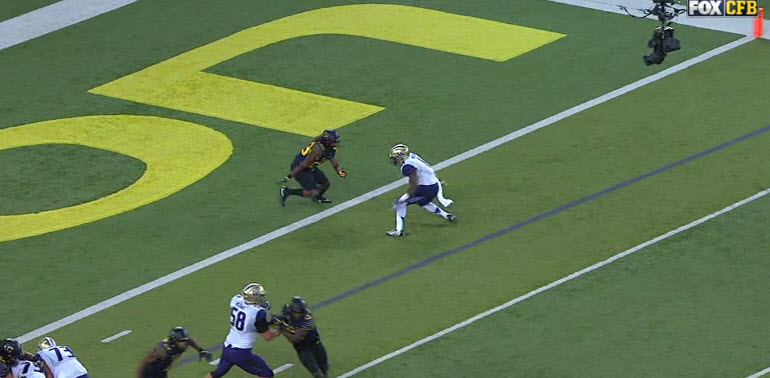
The defender bit hard on the body fake…
The Oregon defender (above) is truly on an island with no inside help; he is coached to take away the slant as that is the easiest throw with no support on an outside receiver. Ross knows this as well, and uses it to get open.
Let’s go over our press coverage checklist: defender stays square; check. Eye discipline; no check. This is what fails the defender above. You can see Ross jukes his upper body like he is going inside but his lower body is in position to burst to the outside–his plant leg is on the inside, meaning he can only push off to the outside.
But the Oregon defender (above) gets caught up in the fake, and in the process fails our third requirement by hopping backward instead of shuffling side-to-side (thus not charging any toll). The result of poor technique? A wide-open touchdown for the bad guys.
These are just two examples of a season filled with No Man’s Land technique and not charging a “toll” from opposing receivers. Overall, the defense was terrible, but to improve you have to break down each position level to address what worked, and what did not. No Man’s Land technique did not work for the defensive backs. Fans should look forward to better techniques implemented by a new defensive staff that has a proven track record of collecting tolls from the offense.
Coach Ruskin Fiegenbaum
Beaverton, Oregon
Top Photo from Video
Ruskin has been following the Ducks since the ’94 Rose Bowl. He graduated from the University of Oregon in 2007 and has been coaching football in the Portland-Metro area since 2008.

